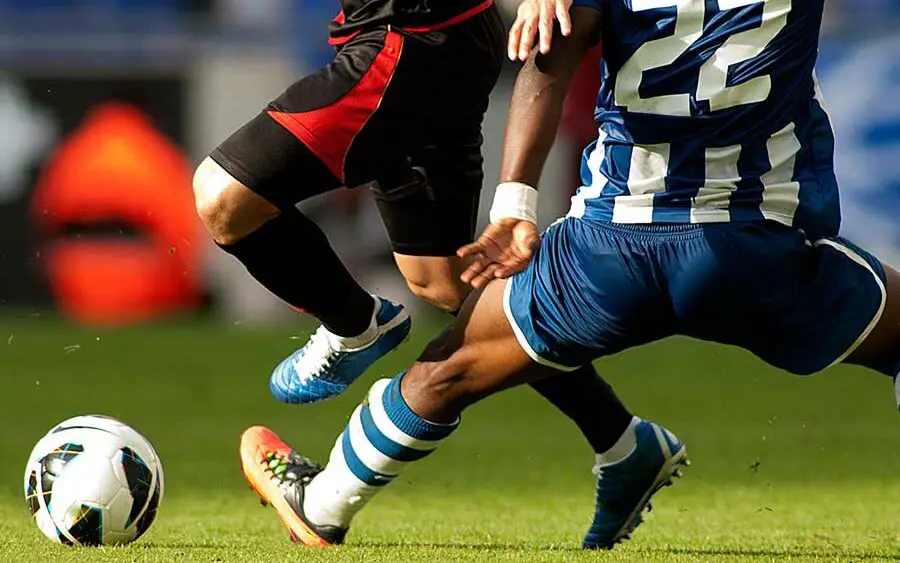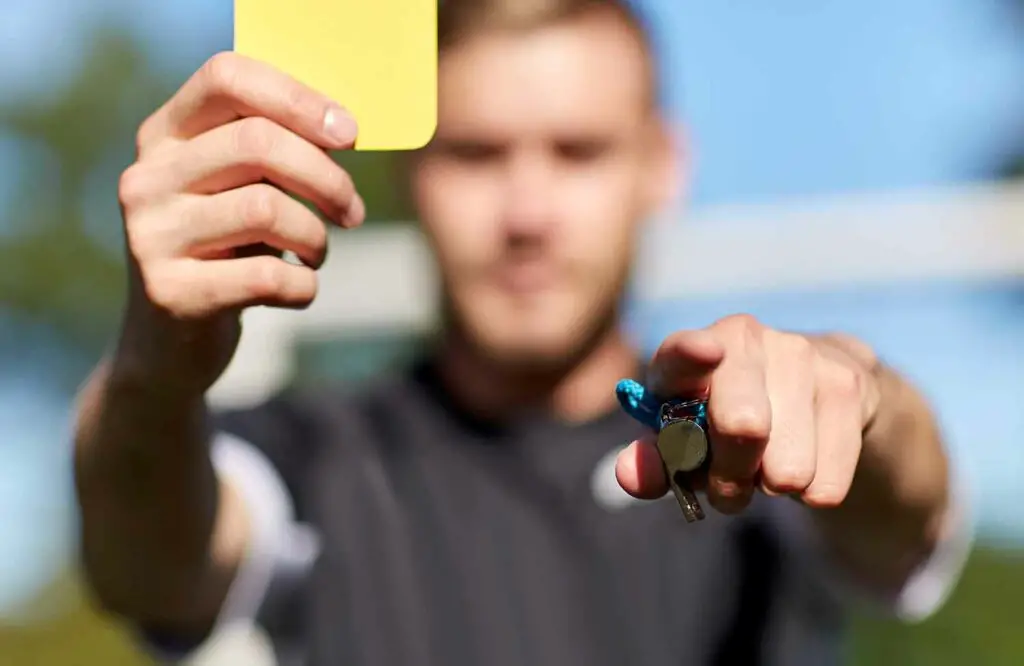Tackle
What is a Tackle in Soccer?
A tackle in soccer is a defensive maneuver wherein a player attempts to regain possession of the ball from an opponent. The fundamental goal is to intercept or dislodge the ball from the opponent without committing a foul or causing harm. Although tackling can be a risky move, it plays a crucial role in enhancing a team’s defensive capabilities.
When a player wins the ball from an opponent by intercepting it without committing a foul this is deemed a successful tackle by the referee. Every position on the pitch is required to tackle but a team usually has specialist players in defense or certain midfielders who are expert tacklers. Tackles are common in every match however can be risky if performed in the penalty area as a foul could be committed and a caution given to the player.
What are the different types of Tackle?
There are many ways to tackle in soccer and as long as the ball is taken cleanly the tackle is successful. Some of the main ways to tackle are:
- Slide tackle – This style of tackle is very common and when performed successfully is often spectacular to watch. The player attempts to slide along the ground towards an opponent, clearing the ball out of play or winning possession for their team.
- Shoulder tackle – This style can also be known as ‘shoulder barge’ and is when a player uses their shoulder or upper body to shield the ball. The aim is to get their body between the opponent and the ball.
- Block tackle – This style of tackle is when a player physically stops the ball by blocking a shot or pass from an opponent. This tackle doesn’t always win possession but can stop an attack or goal from being scored.
When is a tackle a foul?
The referee is responsible for deciding if a tackle is illegal thus being a foul. Sometimes they may receive help from the assistant referee. If a player commits a reckless tackle the referee may decide to award a direct free kick to the opposition team. A tackle is deemed reckless when a player doesn’t make contact with the ball and stops or causes injury to the opponent. This can also lead to a warning being given or for repeated offenses a caution.

A foul tackle occurs when a player tackles an opponent in a manner that is considered careless, reckless, or using excessive force. Reckless challenges, such as tackling with studs up, can be dangerous and are deemed illegal. Referees are responsible for determining whether a tackle is legal or illegal. If a tackle is determined to be a foul, the play is stopped, and sanctions can be applied, including yellow and red cards in more severe instances.
In soccer, illegal tackles can result in penalties such as free-kicks, penalty kicks, or disciplinary actions like yellow or red cards. Examples of illegal tackles include:
- Tackling from behind without attempting to play the ball
- Using excessive force while attempting a slide tackle
- Jumping into an opponent with raised studs
- Recklessly diving into a tackle
When a tackle is given a foul in soccer the severity of the punishment given by the referee often depends on where the foul was committed on the pitch and how reckless the tackle is. A yellow card is the most common punishment however if the player that commits the foul jumps off the ground and makes contact with 2 feet or the studs then the punishment given is almost always a red card. Another way a red card can be given for a reckless tackle is when a defender is deemed to be the last man in defense and they illegally bring down or stop a goal-scoring opportunity. This is also the case when a goalkeeper fouls an opponent with no defenders near or around them.

Tackling in soccer is a technique that can sometimes go wrong if a player decides to tackle aggressively or out of control. Aggressive tackles or tackles that cause injury almost always result in a foul and free kick or penalty. If a tackle is dangerous in soccer it is usually because one or both of the players have jumped into a tackle recklessly or dangerously.
What skills are important for a successful tackle?
For a tackle to be successful and a player to win back the ball for their team, they must have certain abilities and attributes.
- Firstly, when a player goes in for a tackle it’s crucial that they make contact with the ball and not the opponent first. This requires good timing, especially when performing a slide tackle.
- Secondly, as the player must make contact with the ball first, accuracy is very important as the opponent will try to stop the player by blocking the ball. If a player misses the ball and catches the opponent then this can lead to a foul or even a caution.
- Finally, a player must be decisive and determined when executing a tackle. Once the player is committed to the tackle a must not hesitate or change their mind as this could lead to an injury for the opponent or even themselves.
Potential Risks and Injuries
Tackling is a fundamental aspect of soccer, but it comes with potential risks and injuries. In fact, it is considered the most dangerous part of the game, as more injuries occur during tackling than any other activity. A major reason for this is the possibility of players with mismatched skills facing off, resulting in the less skilled player potentially causing harm to the better player.
Ankle sprains are a common injury associated with soccer tackles. They occur when the ligaments in the ankle are stretched or torn, which can happen when landing from a jump after heading a ball or during a slide tackle. To minimize the risk of ankle sprains, players should ensure they are using proper tackling techniques and wearing appropriate protective gear, such as ankle braces or tape.
Falls and collisions during tackles can also lead to various injuries, ranging from bruises and scratches to more serious issues like fractures and dislocations. It is crucial for players to learn and employ correct tackling techniques to protect themselves and their opponents from these types of injuries. Additionally, using quality protective equipment, such as shin guards and mouthguards, can further reduce the risk of injury during tackles.
In order to minimize potential risks and injuries associated with tackling, players should focus on being physically ready for the demands of the game. This includes participating in regular strength and conditioning programs, as well as practicing good sportsmanship and fair play. Adhering to the rules of the game and respecting opponents can go a long way in maintaining a safe and enjoyable soccer experience for all involved.
